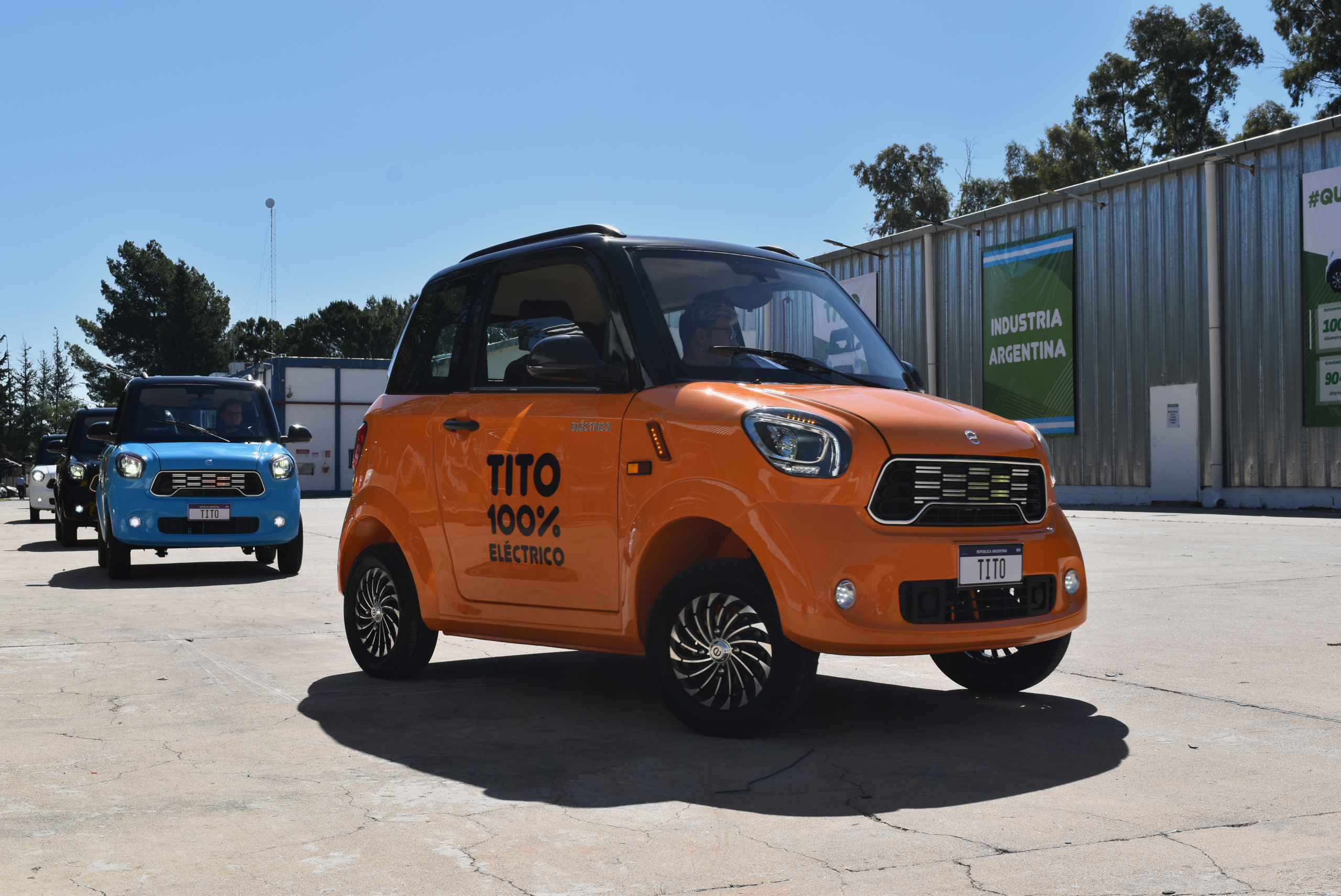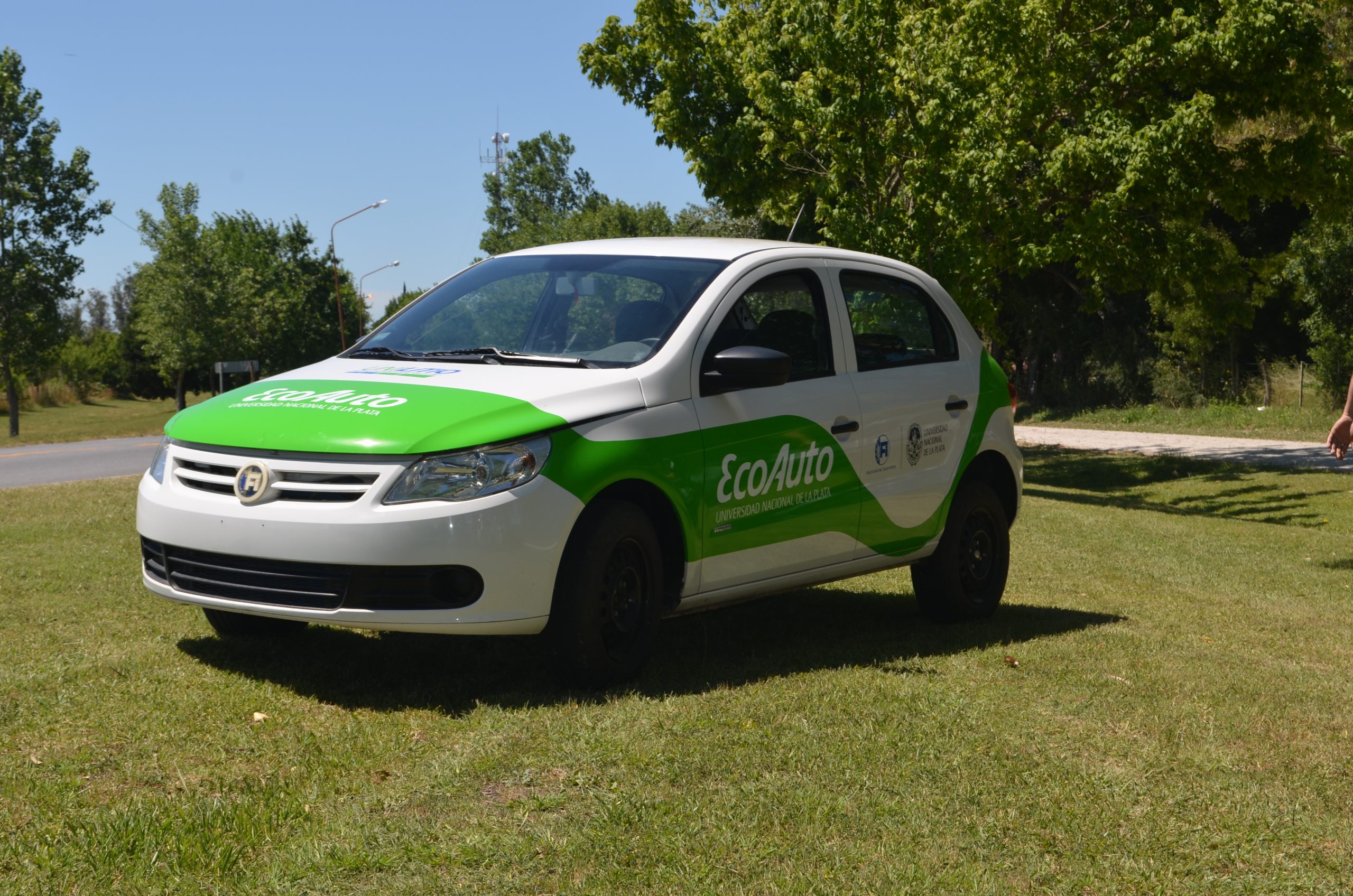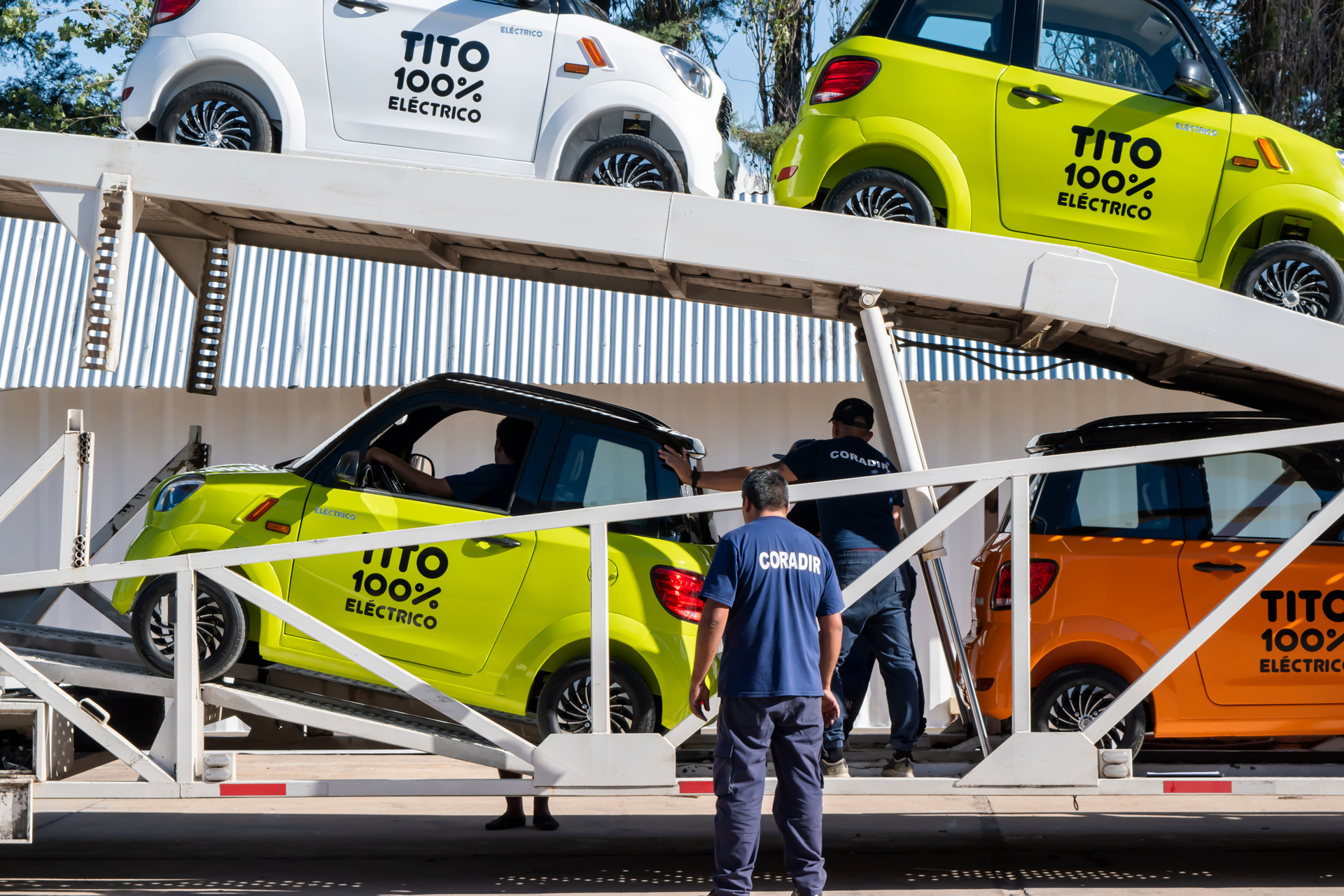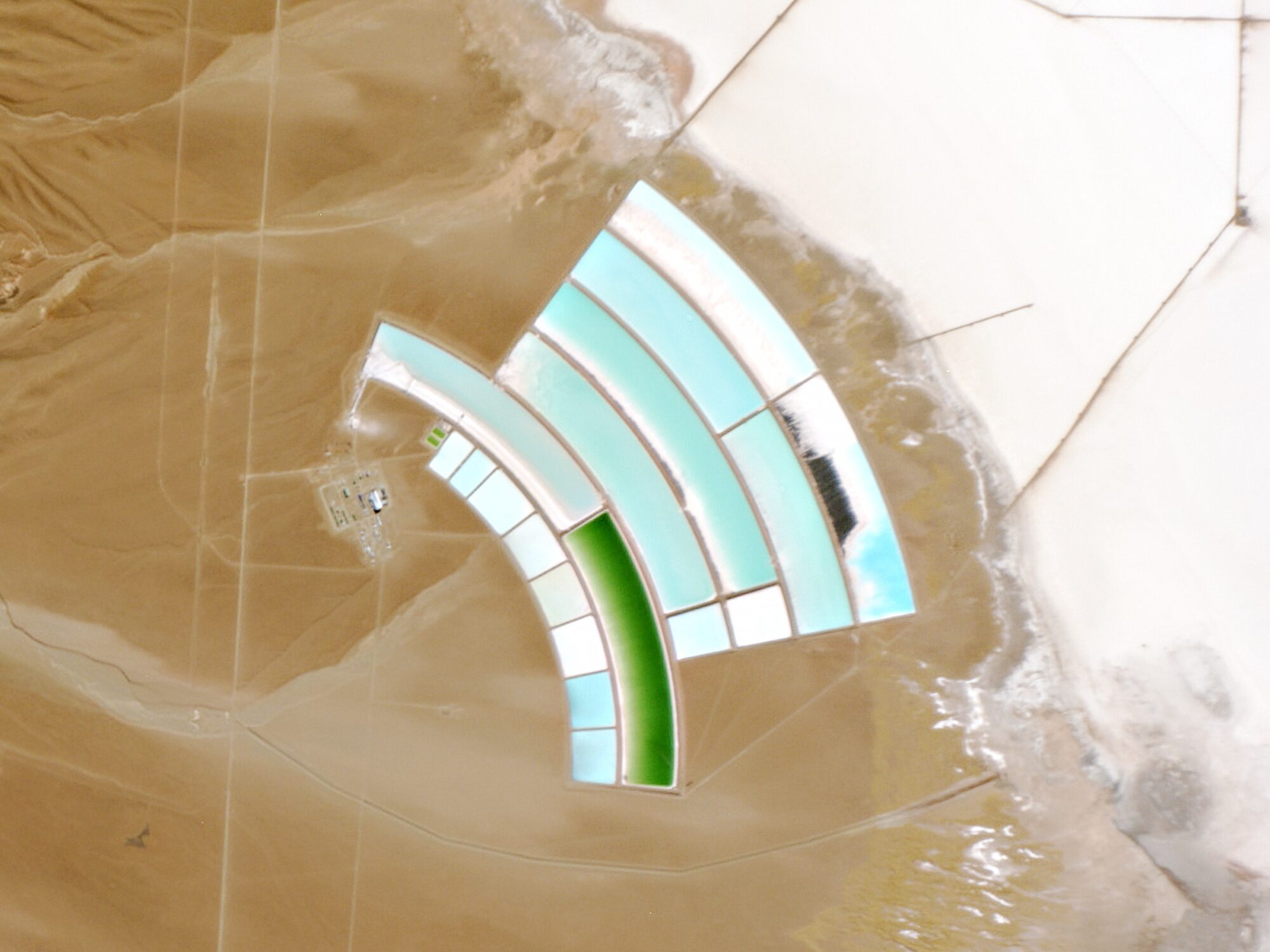At 9am on a Wednesday in December 2012, Pablo Laiolo started the engine of what his team believed to be Latin America’s first electric tricycle. Conceived as a less polluting way of making the 370-kilometre journey between eastern Argentina’s cities of La Plata and Mar del Plata, the vehicle – an amalgam of metal tubes and the chassis of a small aircraft – rolled along at 35 km/h. Too slow to qualify for a road licence, it made its way escorted by a police motorcade.
Everything was running smoothly. Horns and flags cheered on the silent vehicle. Drivers opened the doors of their buses for a better look as they passed by. Onlookers didn’t understand exactly what was going on, but it felt like something important was happening.
The trio in charge of the journey – Laiolo and Augusto Zumarraga, both researchers from the National University of La Plata (UNLP), and Guillermo Garaventta, from the Scientific Research Commission of the Province of Buenos Aires – were forced to a halt on the 307th kilometre: a storm of four tornadoes, which ultimately claimed 27 lives, knocked the tricycle off the road.
After spending the night in the town of Maipú, the team arrived in the seaside resort of Mar del Plata on a clear morning, triumphant. “It was extraordinary. We went up Avenida Colón with the people waving rags and the police taking pictures with the tricycle,” recalls Garaventta.
Their objective was achieved: the vehicle had passed this performance and range test of its Chinese lithium-cell battery. Assembled in the UNLP laboratories, the vehicle’s battery had lasted significantly longer than a lead-acid battery would have. The team considered it the key to a cleaner and less polluting future.
Inventors lead the charge
The tricycle’s immediate predecessor was an electric motorbike that Garaventta bought with his savings. He had converted it to lithium power using a selection of batteries he had originally developed for satellites, which allowed him to minimise weight. Garaventta succeeded with the conversion in late 2011, but faced criticism from his peers because the bike and its 60 km range batteries were Chinese-made; the project did not feature any domestic technology. On the street, however, things were different: when he took his children to school, people stopped the inventor to ask where the bike had come from and how it was made.
At the time, Garaventta said his objective was “to impose the idea that lithium could become an energy alternative for Argentina in the very near future.” Five years later, and by Garaventta’s estimates, every month 20,000 students were being transported around UNLP’s expansive campus on one of two electric buses, and for free. His dream was underway.
Fast-forward to 2024, and Dialogue Earth accompanies Garaventta as he walks the few metres between his office and UNLP’s engineering campus. In a huge shed, a compact Volkswagen sports a decal reading “Eco Auto II” above the driver’s door. It is the successor to the first electric car developed by a Latin American university, which made its maiden voyage on 14 December 2017: “With little commotion and again with the police,” says Garaventta, the car completed a 90 km journey south from La Plata at 60 km/h. Adapted from recycled materials by engineers and students, one full charge of the car’s battery consumes half the energy of an air conditioner.
“The ride is beautiful; all you can feel is the noise of the wheels scraping the tarmac,” the inventor enthused at the time. The build involved designing relevant software, removing the fuel tank and exhaust pipe fittings, and replacing the internal combustion engine with an electric alternative that was five times smaller.
This car was followed up with a passenger bus developed by the university with a range of 200 km, and a fleet of electric vehicles for the Buenos Aires town of Tapalqué: a pick-up truck to collect green waste, a van to transport students and two buses to take passengers to a hot springs resort.
The university does not intend to mass-produce these vehicles, only to make them visible. Lithium “does not have to leave the country as carbonate [a fundamental input for battery cells] as is happening, but as a battery”, says Garaventta. The opportunities inherent in Argentina having some of the world’s largest lithium deposits is all too obvious to him. But “there is no scientific-technological development without state support,” he adds.
Tito, the first private car
Given the instability that has characterised Argentina for decades, Garaventta’s sentiment could be as true as its counterpart: without private actors, the industry will not be able to accelerate. In 2011, while the UNLP tricycle was covering its first kilometres, the Argentine company CORADIR started manufacturing lithium batteries with Chinese cells.
Known for producing computer parts, solar kits and panic buttons, CORADIR soon added powertrains for electric vehicles to its output, hoping to sell them to third-party brands. But as the Covid-19 pandemic progressed, the company eventually found itself with two electric car prototypes ready to go public. Thus was born Tito, the first of its kind in the country.
In May 2021, the manufacturer started the pre-sale of 50 Tito units; they ended up selling 213 in 48 hours. “Up to that point, there were 40 electric cars in all of Argentina,” says the company’s president, Juan Manuel Baretto, from CORADIR headquarters in the province of San Luis.
The company closed 2022 with 298 deliveries and 2023 with 500, making the Tito the best-selling electric car in Argentina. The company achieved this with an almost handmade product: “The welding and the chassis are handmade,” explains Baretto. “To justify an investment in robotics, we will need to sell 10,000 units per year.”
Baretto estimates that CORADIR is behind 85% of domestic-brand electric car sales (VOLT motors and Sero Electric are the next two largest Argentine brands), and that some 800 units are in circulation in the country today. “A derisory figure,” he acknowledges. “In the worst year of the automotive market, 400,000 combustion vehicles were sold; in the best, 1.2 million.” Prices are an additional barrier: the five-door Tito, with more range and speed, costs 24 million pesos (USD 27,000), much more than an entry-level internal combustion engine car.
Barriers to EV uptake
The cultural battle for the acceptance of electric cars is a separate issue. “The fierreros [petrolheads] tell me that they’re nice, but they don’t burn gas or make noise,” Baretto admits. As the silence of electric vehicles has been so disconcerting for some users, Toyota has designed a system that incorporates fake classic engine noises into its electric units with automatic gearboxes.
But for Lien Tori, head of the Urban Mobility Research Platform at the Buenos Aires Institute of Technology (ITBA), the main obstacle to EV acceptance is battery range: “Although electric cars can now travel more than 400 km on a single charge, it should be easier and faster to recharge them.”
The current network of EV chargers in Argentina has reached just over 250 outlets, several of them free of charge, with Shell, Axion and national oil firm YPF as the main drivers. The car-charging network ChargeboxNet has 56 charging points installed, mostly in the Buenos Aires Metropolitan Area; annual memberships cost USD 8-18 per month, depending on the size of a car’s battery.
For an 800 km trip, it doesn’t make sense to use an electric car. The ideal use is urbanJuan Manuel Baretto, president of CORADIR
Although it is growing, this charging network remains insufficient compared to the country’s almost 3 million square km. “Supply pushes demand,” surmises Tori. A potential tax cut on electric vehicle imports has been seen as a way to increase their presence on the streets, which would in turn inject more money into the sector and enable expansion.
Baretto prefers to point in a different direction: “For an 800 km trip, it doesn’t make sense to use an electric car. The ideal use is urban; in a city you do 20 km a day. The answer is a small, light car that doesn’t pollute, is good for 90% of your movements and, when plugged into the socket, has an impact similar to an air conditioner.”
The road to lithium
Before electric cars, there must be batteries. And before batteries, lithium – a material that has given rise to a minefield of geopolitical tensions. Soft and silvery, lithium has the greatest energy storage capacity per unit of weight of any metal. The fiercest demand for lithium batteries comes from the automotive industry. American builder Tesla produced 1.8 million electric cars last year, while the European Union is helping to drive the transition: from 2035, it will only allow the sale of new cars to be zero-emissions vehicles.
In its Mineral Commodity Summaries 2023 report, the US Geological Survey estimated there are 98 million tonnes of lithium on the planet, although this figure is likely to rise amid continuing exploration. Based on the report’s current estimates, Bolivia holds 21 million tonnes, Argentina 20 million and Chile 11 million – together more than half of the estimated global reserves.
In many cases, mining lithium entails drilling 200 metres down into the earth and pumping out the brine in which the metal is found. These salts are precipitated in large pools and solar radiation is used to create lithium chloride, to which sodium carbonate is added to produce lithium carbonate. This white powder can then be sold to factories for processing, which mostly takes place in China where the majority of battery cells are produced.
The differences in the valuation of the resource within the so-called “lithium triangle” of South America are dramatic. Bolivia’s former president Evo Morales created the state-owned lithium company Yacimientos de Litio Bolivianos in 2017, while Chile raised its taxes on large lithium mining operations to 46.6% in line with international prices last year. Argentina, on the other hand, has not even declared it a strategic resource. This means that lithium is taxed at 3% at the point of extraction and 4.5% when exported.
Three lithium mining projects are currently at an operational stage in the country, and are run by the US company Livent (Salar del Hombre Muerto, Catamarca province), Australia’s Allkem (Salar de Olaroz, Jujuy) and Ganfeng Lithium of China (at Cauchari-Olaroz, also in Jujuy). There are also dozens more projects in different stages of development, which would draw the Salta and La Rioja provinces into the industry, being overseen by Korean, German, French and Canadian companies.
This mining push could gain even more traction with the arrival of Javier Milei as Argentina’s president. During an interview in December, Milei revealed Tesla’s CEO Elon Musk had called him to say he was interested in Argentine lithium, as was “the US government and many companies”.
Argentine batteries
On the other side of economic growth through exports of raw materials is the slower – but more strategic – cultivation of added value through the development of home-grown technologies. If the available know-how of local universities, research institutes and companies was adequately tapped, those within the sector say these efforts could lead to a leap in the quality of knowledge production in this part of the world.
The establishment of UniLiB in La Plata, Latin America’s first lithium cell plant, is an example of this emerging added-value market. The plant is a joint initiative between the UNLP and Y-TEC; the latter is a majority state-owned research and development company dedicated to Argentina’s energy industry, created in 2013 by YPF and the National Scientific and Technical Research Council (CONICET).
Promoted by Argentina’s previous government, in the medium term UniLiB will seek to cover all phases of the business, with a view towards national energy sovereignty, from the exploitation of deposits, to transport, storage, industrialisation and commercialisation. Garaventta estimates that in its first stage, UniLiB will be able to power the equivalent of 2,500 houses or 35 buses in a year with its batteries.
After successive postponements, UniLiB’s inauguration is still on hold: the team must wait for the new national government to establish the guidelines of its lithium strategy.
“It is more important to produce batteries than cars, where there is already a lot of competition,” warns Tori. “The challenge is to develop [batteries] with longer lifetimes and higher energy densities, as for now they are more expensive than [a vehicle’s] engine and transmission system.”
Green mobility?
The goal of making mobility 100% green – through solar- or wind-powered charging – still looks difficult but is necessary for the reduction of greenhouse gas emissions. Argentina aims to generate 57% of its electricity from renewable sources by the end of the decade, according to a national official energy transition plan presented in 2023.
“A full charge of a car at home can take up to eight hours, but costs eight times less than filling it with petrol,” says Tori; electricity is heavily subsidised in Argentina. Garaventta elaborates on this: “When an electric car is plugged into a standard socket, at some point it consumes oil or its derivatives, but it already generates 40% less emissions than the same vehicle using petrol. Now, if you talk to me about the carbon footprint of building the vehicle… Well, it’s never-ending.”
Carbon footprints arguably pale in comparison to other impacts of Argentine lithium extraction. Found beneath wetlands located more than 3,000 metres above sea level in the Andes mountains, these arid areas are home to endemic animals such as flamingos, and micro-organisms of great scientific value. High Andean wetlands contribute to soil protection and water regulation, and they are also large carbon sinks.
To produce one tonne of lithium, between one and two million litres of brine evaporate, but leaves groundwater in the area irreversibly salinised, which can be to the detriment of crops, animals and people left without fresh water. Furthermore, soil subsidence and the emptying of some aquifers may become latent dangers.
In January, the Interamerican Association for Environmental Defense (AIDA) hosted a seminar on Andean wetlands that featured Laura Castillo. An Andes specialist for the Environment and Natural Resources Foundation (FARN, a sustainable development charity), Castillo said: “Lithium is not going to solve climate change, especially if we take it out to make individual cars. We have to question the dominant narrative of the energy transition, which is based on continuing to plunder ecosystems.”
According to the International Energy Agency, by 2040 lithium production would have to increase 42-fold from 2020 levels if it is to meet the global demand.
During the same seminar, Clemente Flores, a local leader from the Salinas Grandes basin in Jujuy, explained how the 6,000 members of his community are fighting a legal battle to stop a mining consortium’s extractive project there. Flores says they fear the industry will destroy the most sacred – and necessary – element in his community: “Beyond lithium, we are concerned about the use of water. We are not going to eat batteries.”
This article was produced as part of the Pathways to Net Zero Project in Argentina, a joint initiative of the Earth Journalism Network, Banco de Bosques, Claves21 and Periodistas por el Planeta.












